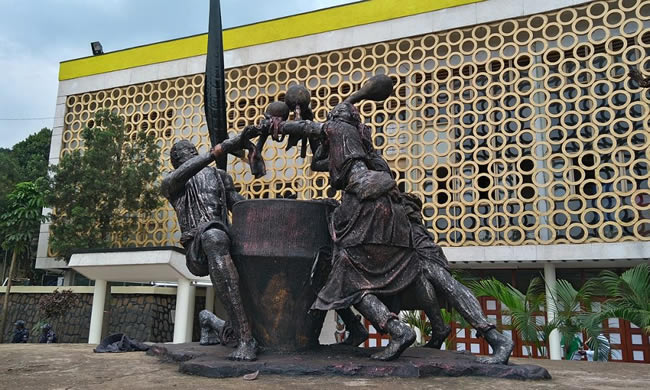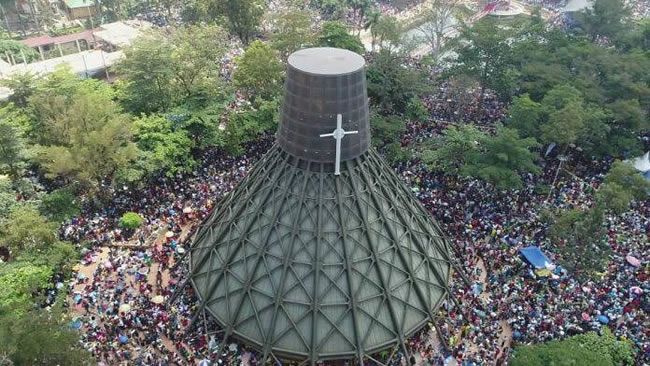This is a city in central Uganda and the capital of Uganda, which got its name from the Luganda dialect “Kasozi K’empala”, meaning a “hill of the Impalas”. Kampala is composed of 7 hills that were occupied by the Impalas, so when Dr. Fredrick Lugard came to Uganda, he camped at one of these hills in 1898 and established the Imperial British East Africa Company.
The city further grew during the period when Kabaka of Buganda set up his court here, Kampala attained its municipal status in 1950s and by 1962, it was declared a city replacing Entebbe, but later in 1979, the city structures were destroyed during Uganda-Tanzania civil wars under dictatorship of president Idi Amin Dada. The city is composed of 7 original hills and these are;
- Rubaga,
- Nakasero,
- Namirembe,
- Old Kampala,
- Mengo,
- Kibuli and
- Makerere.
Kampala city however now has overgrown to more than these hills, but the 7 hills remain with a historical significance of culture, religious and colonial. The city covers over 21 hills but we still hold the name of 7 hills because of their historical importance and attractiveness.
Attractions in Kampala.
Kampala city is composed of attractions that are unmatched starting from the 7 historical hills, Kasubi tombs where the kings of Buganda were buried, Kabaka’s manmade lake, Uganda museum, National theater, Uganda parliament, Cathedrals (Namirembe and Rubaga) and independence monument.
Namirembe Hill.
This is where the oldest St. Paul’s Cathedral Namirembe was built, the hill towers 334 meters above sea level, and it’s where the first Anglican communion in Uganda was founded. The hill got its name from the Luganda language Namirembe literally meaning “peace”. Visiting this hill will give you a magical view of the entire Kampala city.

Rubaga Hill.
This hill is 434 meters above sea level. This is where the first French white fathers were received by Kabaka Muteesa 1, after the death of Kabaka Muteesa 1, Kabaka Mwanga the son took over the throne. By that time the throne was at Rubaga but later lightning struck the palace and he shifted to Mengo and he left Rubaga and Namirembe for the church. Rubaga is a Luganda dialect that literally means “plan”, Baganda warriors used to come here and plan for the war.
Mengo Hill.
Mengo hill is close to Namirembe hill and this is where the Buganda parliament and Palace is located. The place covers an area of 4 square kilometers and it’s where Kabaka Mwanga established the palace after the death of his father in 1884. The Kabaka lake is so close to Mengo hill, and it was originally built by Kabaka Mwanga as an escape route.
Old Kampala Hill.
This is where the city of Kampala started, it derives its name from the African Antelopes – Impala, which were the main inhabitants of this hill in the 19th century. In the 1890s, Captain Lugard established a fort on this hill which was later demolished in the 1970s during Amin’s rule. In 2007 a new mosque was built with help from Col. Muammar Gaddafi and it was named Gaddafi Mosque which is the second largest in Africa.
Makerere Hill.
Makerere hill is referred to as the hill of knowledge since it is where Uganda’s first University was built, first as a college in 1922. It is 3 kilometers from Kampala city center along Bombo Road. It was called Bwaise, but it changed to Makerere after the King/Kabaka forgot to go back to his palace because he was with a woman at this place and he was surprised how dawn fell before returning to his palace, and he said “Gano Makerere” meaning it had dawned without him knowing and since then it was renamed Makerere.
Nakasero Hill.
This hill is at a high altitude and located in the center of Kampala. Historically it is where the colonial masters settled in upper Nakasero. This is where Uganda’s state house sits. It is on this hill that you find many embassies and high-end hotels like; Sheraton, Serena hotel, Grand imperial hotel, Fairway, Hilton, Pearl of Africa Hotel and Speke hotel.
Kibuli Hill.
Kibuli hill is where you will find Kibuli mosque and it is really worth a visit. Other hills you will encounter include; Naguru hill, Mutundwe, Mutungo hill, Bbunga hill, Muyenga hill, Buziga hill and so many others since the city is growing outwards.
Uganda Museum.
Uganda’s museum is the oldest in East Africa, established in 1908 under the British protectorate government. The museum started as a small Sikh temple at Fort Lugard, Old Kampala hill. The museum at Fort Lugard became too small and it was transferred to the Margaret Trowel school of fine Art at Makerere University in 1941. Later in 1954, the funds were raised and the museum was transferred to its permanent home where it is currently located in Kitante. In 2008, the museum made 100 years of existence. The museum is one of the oldest, it has almost everything/remains of the ancient tribes and their cultures.
Kabaka lake.
This is the largest man-made lake and it was constructed by Kabaka Mwanga who wanted to act as an example to his subjects.
Kasubi Tombs.

This is the burial ground for all fallen Kabaka kings and other royals. It is also worth a visit when you are in Kampala.
Rich Culture in Kampala.
Kampala is located in the central dominated by the Baganda, who have a fascinating culture that is expressed through their delicious food, dances, songs, handcrafts, stories, norms and language.
The Ugandan parliament.
This is another attraction given the evolution it has gone through over the years. It was called a National Assembly, during its establishment in 1962 presided over by Sir John Bowes Griffin, a British lawyer and former Chief Justice. At the time, Ugandan parliament had 92 members.
Night life in Kampala.
Kampala is known as a city that never sleeps. Bars and nightclubs keep open till day break and visitors who come from other countries always find this night experience unique and attractive.
Activities to do while in Kampala.
When you are in Kampala, there are a variety of things to do and experience. These include the following;
Visiting the Kasubi Tombs.
This is where former Buganda Kings and other Royal family members are laid to rest, these Kasubi Tombs give you an impression of typical Baganda architecture, with thatched huts which were built in 1882 by Kabaka Muteesa 1 as a palace but when he died later after two years, this was turned into a burial site.
Visiting the Uganda Museum.

This was established in 1908, this is the oldest Museum in East Africa. The museum displays Uganda’s cultural heritage which offers educational lessons, and outreach programs where one can be able to see the long ago and forgotten history of Buganda and Uganda at large.
Namugongo Martyrs Shrine tour.

This is where the 32 young men were burnt to ashes after refusing to renounce Christianity. They were killed on the orders of Kabaka Mwanga of Buganda. The shrine is located in Wakiso district in Kira municipality, off Kampala Jinja Road. This is a must-visit when you visit Kampala and many tourists have visited this place for its history and sculptures.
Walk through Makerere University.
This is the oldest university in Uganda that was established in 1922. It started as a teacher’s college, and later advanced to a degree awarding institution. So many East African leaders studied from here and the rest of the world. Most people visit the institution for historical reasons and also to have a fabulous view of the town.
